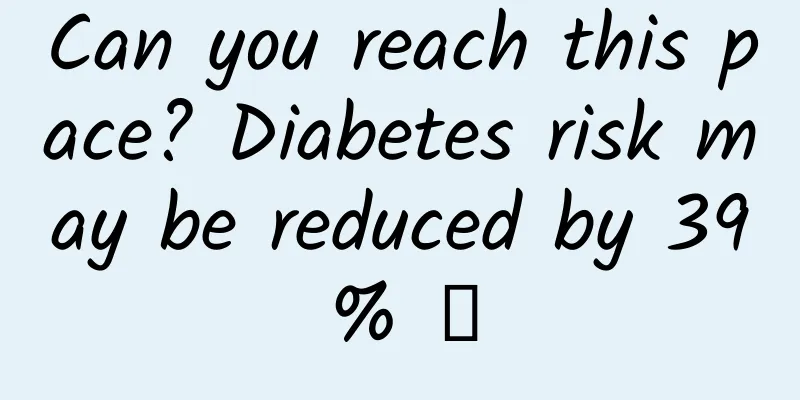Can you reach this pace? Diabetes risk may be reduced by 39% →

|
Compiled by: Gong Zixin Type 2 diabetes is a progressive, chronic disease recognized as one of the most common metabolic disorders in the world. Currently, there are 537 million adults with diabetes worldwide and it is expected to reach 783 million by 2045. Walking may be the simplest and cheapest way to prevent type 2 diabetes. Recently, a meta-data analysis published in the British Journal of Sports Medicine showed that walking at a speed of 4 km/h or faster was associated with a significantly reduced risk of developing type 2 diabetes. Additionally, for every 1 km/h increase in walking speed, the risk of type 2 diabetes decreased by 9%. While we know that regular walking reduces the risk of type 2 diabetes, it is unclear what the optimal pace is for avoiding the disease. The researchers searched for relevant long-term studies published up to May 2023 and found 10 studies that met the inclusion criteria. These studies were all published between 1999 and 2022 and included 508,121 adults from the United States, Japan, and the United Kingdom monitored for 3-11 years. The comprehensive data analysis results show that compared with walking speed less than 3 km/h👇 People with an average walking speed of 3-5 km/h had a 15% lower risk of developing type 2 diabetes, regardless of walking time. ★ Brisk walking at a speed of 5-6 km/h reduces the risk of type 2 diabetes by 24%; ★ Walking briskly or with long strides at a speed of more than 6 km/h reduces the risk of disease by about 39%, which is equivalent to 2.24 fewer cases of type 2 diabetes per 100 people; ★For every 1 km/h increase in walking speed, the risk of type 2 diabetes decreases by 9%; The minimum threshold of 4 km/h is equivalent to 87 steps/minute for men and 100 steps/minute for women. Relative risk of developing type 2 diabetes after brisk walking compared with easy/casual walking Dose-response association between walking speed and risk of type 2 diabetes Walking speed is an important indicator of overall health and a key indicator of functional ability; faster walking speeds are associated with better cardiorespiratory fitness and muscle strength, both of which are associated with diabetes risk; brisk walking is beneficial for weight loss and helps improve insulin sensitivity. The researchers noted that three studies were rated as having a moderate risk of bias, while the other seven were rated as having a serious risk, mainly due to insufficient adjustment for potential influencing factors and the way walking speed was assessed. Another factor to consider is reverse causality, that is, participants with faster walking speed may be more likely to be physically active, have better cardiorespiratory fitness, greater muscle mass, and better overall health. Despite these limitations, the researchers concluded: "The current meta-analysis of cohort studies suggests that brisk and high-strength walking may be associated with a lower risk of type 2 diabetes in adults, independent of daily physical activity or walking time. Current strategies to increase total walking time are beneficial, but brisk walking is still encouraged to further increase the health benefits of walking." Data chart and reference source: https://bjsm.bmj.com/content/early/2023/11/14/bjsports-2023-107336 |
<<: We may have gotten the "taste map" on our tongue wrong | Science Gallery
Recommend
How long after induced abortion can you have a baby
Induced abortion surgery is not unfamiliar to man...
Is it necessary to increase the dosage of analgesics when giving anesthesia to an alcoholic?
In clinical work, when we encounter some alcoholi...
What does ketone body 20 mean in pregnant women?
During a woman's pregnancy, she needs to unde...
Causes of uterine separation in early pregnancy
The early and late stages of pregnancy are relati...
What is the cause of a fleshy lump on the vulva?
Regardless of the age of women, the genitals are ...
Getting hot is a sign of pregnancy
Women who are preparing for pregnancy are very ne...
Is it safe to have an abortion?
Nowadays, many women choose to have an abortion a...
Why is the surface of dried tofu sticky?
Dried tofu is salty, fragrant and refreshing, har...
Does mouth breathing cause a retracted chin? Children need to pay special attention
Review expert: Peng Guoqiu, deputy chief physicia...
Normal value of glucose tolerance one hour after meal
The glucose tolerance test is a must during pregn...
How painful is menstruation
Many female friends feel extremely painful every ...
What to do if endometrial thickening occurs after taking tamoxifen
For women, the uterus is a very important reprodu...
What happens to goldfish when they encounter high temperatures? Do goldfish need to be heated during the winter?
As people's quality of life improves, more an...
How big should a breast nodule be before surgery is required?
Breast mass is a symptom that is common in breast...
How to be an elegant and graceful woman?
Women come in all shapes and sizes. How to be an ...









